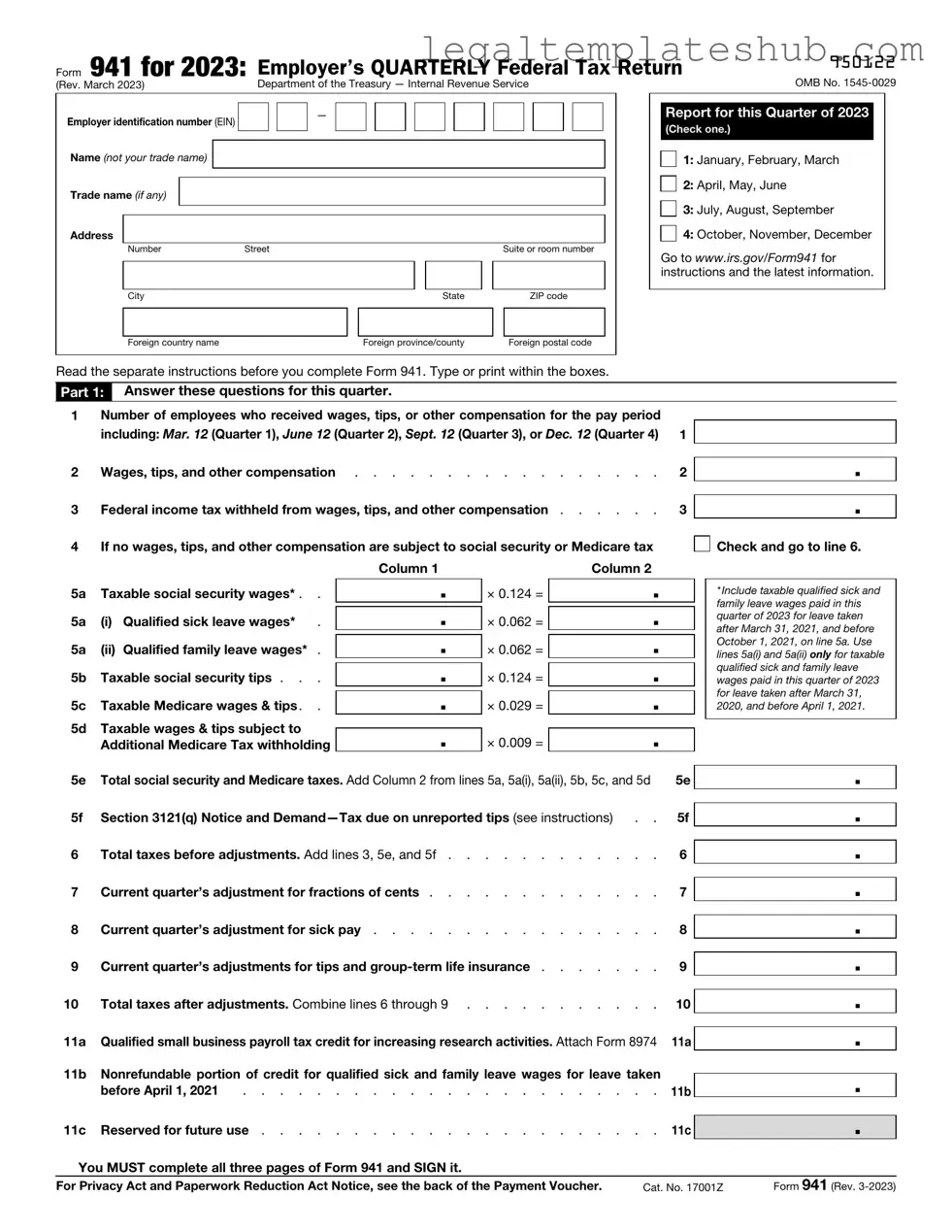Blank IRS 941 PDF Form
The IRS Form 941 is a crucial document that employers use to report income taxes, Social Security tax, and Medicare tax withheld from employee paychecks. This quarterly form helps the IRS track the taxes that businesses owe and ensures compliance with federal tax laws. Understanding how to accurately fill out this form is essential for maintaining good standing with the IRS, so take the first step by clicking the button below.
Access Editor
